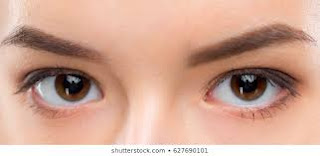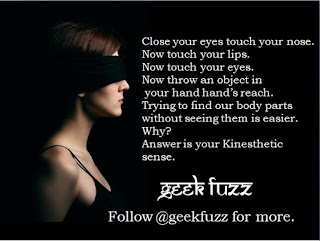Body Language : A TOOL
BODY LANGUAGE
“We talk with our vocal cords, but we communicate with our facial expressions, our tone of voice, our whole body”, says a psychologist.
What kind of body language you can have for successful business meetings, interviews, better relationships and much more since it is communication and better the communication better the relations whether they are personal and professional. Mastering which is itself an art. So, this blogpost of mine is here to help you. Let’s get started.
1 Eye Contact
Eye contact is one of the most important factors in effective communication.
When we want someone’s attention, we say that we’re trying to “catch their
eye”. Conversely, we know that a person who doesn’t look at us is trying to
avoid us.
Since, the eyes have been called the windows of the soul; they seem to reflect our nature.
How can you use it for your own benefit?
Consider a situation where you are a speaker in front of imagine like 50-60 people. So how many people you would look towards, Will you focus in few who seem to be listening you? What do you think is your answer?
However if you are a speaker you should do the following:
- · A speaker should always look at the listeners. He should not, because of his own nervousness, look down or look up, or gaze out of the windows while s/he is speaking. (This will give the listeners an impression that the speaker is not interested in what s/he is saying.)
- · When speaking to a group, look at all the listeners.
- · Avoid focusing on any part of the group, or on an individual. (Some nervous speakers make this mistake, if some person or persons seem to keenly following their talk.)
What you should keep in mind is it is for the speaker to bring everybody into the talk and make them focus on him or her.
Where do people fail, when this is such a ridiculously easy task (okay this is just a joke because it ain't easy bringing people's attention towards yourself until you really have something very interesting or you master the art of not boring anyone somehow)?
People actually forget that they have to make eye contact in different ways in different settings. Suppose you are in an interview and during the conversation you mistakenly stare at them, or you are a boss intimidating your employee by staring will make them feel nervous, So how can differentiate these two?
Remember that looking at someone to establish eye contact is different from
staring at them (which is offensive) or looking into their eyes (which is reserved
for lovers!).
Now look at this picture below, Do you agree looking in everyone’s eye like that? (You can’t look into somebody’s this cheekingly until have some sort of connection!
At an interview, for example, if the interviewee looks right back at the interviewer throughout the time a question is asked and answered, the interviewee may be thought to be aggressive, cheeky or disrespectful.
So, how do you improve?
In such situation the acceptable direction of the gaze is towards the interlocutor’s face,
without fixating on any particular feature; and the gaze is occasionally broken by looking away.
Sounds easy right? It actually will take a lot of time practice. And viola! After numerous unsuccessful attempts and lots of practice you can master it.
2. Posture
While talking to someone and having very serious conversation would you appreciate their slouching back and not sitting properly and them not having good posture?
Answer is NO!
Proper posture is also important for good communication.
What are bad posture that somebody you might have seen doing (and even you might have done!).
- · Leaning backwards
- · swinging the legs
- · resting the head backwards in reclining chair
- · swiveling too frequently or playfully
Above all considered bad manners. So during any professional meeting you are advised to avoid these!
So, you wonder about the postures that are considered good one, lets discuss them:
- · Bend forward a little keeping the elbows at the side of the trunk of your body, to indicate that you are listening attentively.
- · Gaze towards their face (I’m talking about merely looking without focusing on one particular feature as discussed above).
- · Sit with open palms instead of closed fist.
Look at these pictures below, the gentlemen you’re seeing are good examples of what you might adapt for best sitting posture while you are in professional setting.
3. Distance
The physical distance between people is usually a clear indication of the relationship between them.
The idiom ‘to keep someone at arm’s length’ clearly tells us that the more the distance, the weaker the relationship.
So, let get an idea about maintaining proper distance.
The American anthropologist Edward T. Hall. Hall defined three kinds of personal spaces that surround individuals:
- Intimate space — the closest “bubble” of space surrounding a person. Entry into this space is acceptable only for the closest friends and intimates.
- Social and consultative spaces — the spaces in which people feel comfortable conducting routine social interactions with acquaintances as well as strangers.
- Public space — the area of space beyond which people will perceive interactions as impersonal and relatively anonymous.
Physical distance plays a large role in communication, and is normally achieved very intuitively. Gender sensitivity, cultural practices, and individual preferences all govern our ideas about how much personal space around us we are comfortable with.
I’ve got few examples regarding understanding this concept:
In some cultures, a pat from a superior may give an employee a feeling of confidence and satisfaction that his work is being recognized or appreciated.
Similarly, a warm hug or hearty handshake may let the worker know that the boss is open and sincere and wants a good relationship.
A lecturer standing on an elevated platform can rarely strike a rapport with his students. One who goes closer to the students, walking in between the aisles, may strike the right chord of intimacy.
But too much closeness between a superior and his staff may be seen as intimidating.
One also can also use this in a bad way e.g. some people use the wrong body language when they are emotional or wish to express something forcefully.
A raised hand and a pointing finger can always be construed as a threat.
The author has personally observed such a gesture being made by an emotional advocate in the High Court. Naturally, the judge felt that he was being intimidated and admonished the lawyer. The client had to suffer for his lawyer’s unintentional deed.
Action Interpretation
Eyes, face:
Maintaining eye contact Keenness to talk, boldness, confidence
Looking away, shifting eye-contact Disagreement, impatience, loss of interest, dishonesty
Looking down Shyness, nervousness
Looking up over the interlocutor’s
head Lack of interest
Closing the eyes Lack of interest, hostility
Raising the eyebrow Surprise
Widening of eyes Surprise, threat or shock
Irregular movement of the eyeballs Confusion
Lips:
Tight lips Anger or low spirits
Biting the lips Nervousness
Body language and posture:
A jutting-out Chin Defiance, belligerence
Rubbing one eye Boredom
Open palms Openness
Foot tapping Impatience
Folded hands resting on table Attention
Leaning slightly forward, seated Showing interest
Leaning back, seated Relaxed
So, that's all. Hope you learned!
Thank you for reading!
Please consider sharing your thoughts in comments.
And please share this to who y think might end up learning something!












Very interesting 👍👍
ReplyDeleteThank you!
Delete